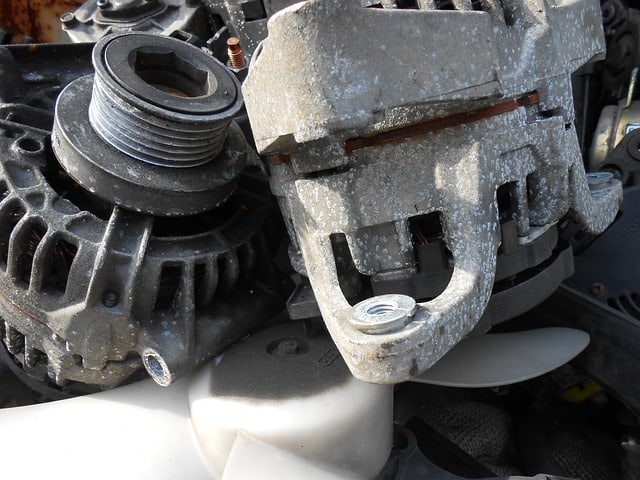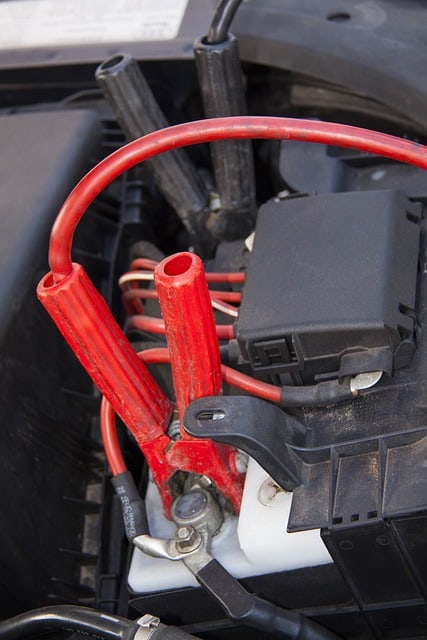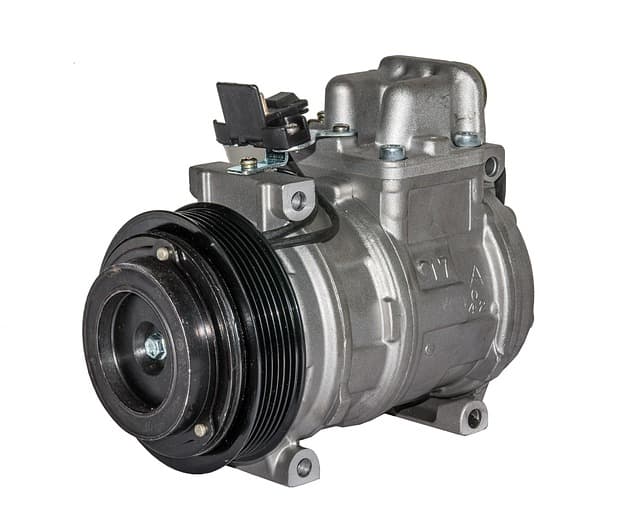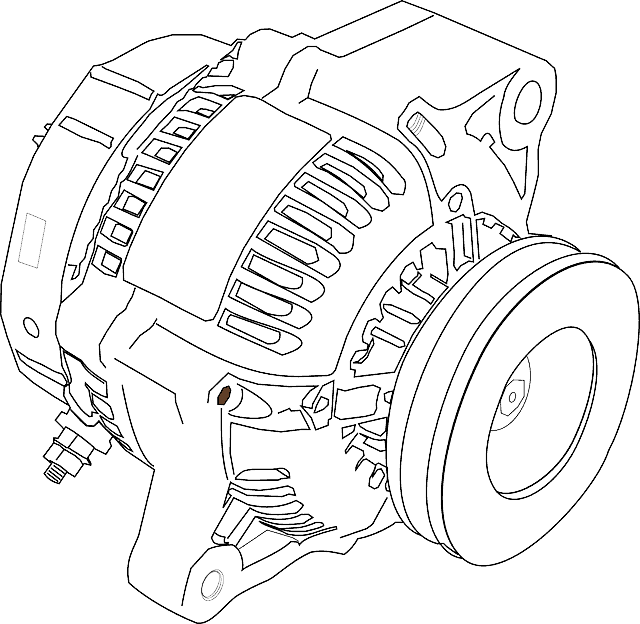Have you ever been in a situation where your car won’t start and it was the alternator’s fault? It’s stressful, but what if you need to get somewhere fast and you have no other option but to try to start the car? Can you jumpstart a car with a bad alternator?
Based on my automotive expertise, I can tell you that it’s possible, but isn’t a long-term solution. Jumpstarting a car with a damaged alternator is temporary and shouldn’t be used as a long-term solution.
In this article, I’ll explain what to look out for to restart a car with a faulty alternator.
Table of Contents
Can you jumpstart a car with a bad alternator?

Jumpstarting a car with a damaged alternator is doable, but it’s not a long-term solution. When you restart a car, the electricity comes from the battery of the vehicle being jumpstarted, not the alternator. The alternator’s function is to replenish the battery and power the car’s electrical system while the engine is operating.
The alternator plays a crucial role in the electrical system of a car, converting mechanical energy into electrical energy to power the vehicle’s electronics and recharge the battery.
Consequently, if your alternator fails, your car’s battery will be unable to recharge, and your vehicle will ultimately lose power. Jumpstarting the vehicle with jumpstart cables or any other method will provide you with enough power to get it started and take it to a professional to have the alternator repaired.
It’s important to realize that frequently jumpstarting your vehicle might harm your battery and the vehicle’s electrical system.
How to jumpstart a car with a bad alternator
When you have a dead car battery and a faulty alternator, you must know how to properly restart your vehicle. While there are several options you may attempt, bear in mind that none of them will genuinely address the fundamental problem with your alternator.
Traditional Jumpstart
The most common method of jumpstarting a car involves using jumper cables and another vehicle with a functioning battery. Here’s what you need to do.
- First, make sure both vehicles are turned off and the jumper cables are connected the right way to both batteries.
- Start the working vehicle and let it run to charge the dead battery.
- Then, try to start the stalled vehicle. If it starts, leave it running for at least 30 minutes to allow the alternator to recharge the battery. If it doesn’t start, there may be a larger issue with the alternator or battery.
- It’s then recommended to let your system be checked.
Jump Box

A jump box is a portable battery pack designed to jumpstart a car without the need for another vehicle. Here’s how you use a jump box to jumpstart a car:
- Simply connect the jump box to the dead battery and start the car.
- Leave the car running for at least 30 minutes to allow the alternator to recharge the battery.
Jump boxes can be a great alternative to traditional jumpstarting, especially if you’re stranded in a remote location.
Push Start
This approach necessitates a manual transmission and a downward slope.
- First, accelerate the automobile.
- Then, get in your car, shift into second gear, and let off of the clutch while simultaneously hitting the throttle pedal. This should start the engine.
It’s important to note that we don’t advise trying this procedure because it may cause transmission damage. However, if you’re in a pinch, it’s worth a shot.
Charging the Battery
You don’t need to jumpstart the battery if you have a battery charger or a portable solar panel. Although it could take a little longer, this approach recharges your battery safely and without endangering your vehicle.
Despite the fact that using these techniques can get your car started if the alternator is damaged, it’s vital to keep in mind that they’re not a permanent fix. To stop more issues, you’ll eventually need to get your alternator fixed or replaced.
In addition to following these steps, there are a few other things to keep in mind when jumpstarting a car with a bad alternator:
- Always wear safety gear, such as gloves and eye protection, and remove your jewelry.
- Make sure both vehicles are turned off before connecting the jumper cables.
- Double-check the connections to ensure that they’re secure before attempting to start the engine.
- Once your car is running, avoid turning off the engine until you reach your destination, as it may not start again if the alternator isn’t functioning properly.
By following these tips and methods, you can safely jumpstart your car with a bad alternator safely in a pinch.
Signs of a bad alternator

Signs of a bad alternator can be easily noticed if you pay attention to your vehicle’s performance. Here are some common signs of a bad alternator:
Dimming or Flickering Lights
Dimming or flickering lights are among the most typical symptoms of a faulty alternator. Headlights or interior lights may fade or flicker if the alternator is unable to supply adequate power to the car’s electrical system. If you detect this issue, have a qualified repair shop examine your alternator.
Battery warning light
A warning light on the dashboard that looks like a battery or says “ALT” may signal a problem with the alternator. This light can be an indicator that the alternator isn’t recharging the battery, which might cause the battery to die or prevent the car from starting.
Dead Battery
A bad alternator can cause the battery to drain quickly, leaving you with a dead battery. If you jump-start your car and it runs for a short period before the battery dies again, it’s likely that the alternator is failing.
Electrical Issues

A faulty alternator can cause a range of electrical issues in your vehicle, including power windows that won’t roll up or down, a radio that won’t turn on, or dashboard lights that flicker or go out.
Strange Noises
A failing alternator can produce strange noises, such as a whining or grinding sound. These noises are caused by worn-out bearings or other internal parts and should be checked by a professional mechanic immediately.
Burning Smell
If you smell burnt rubber, your alternator may be failing. A bad alternator can cause a burning rubber smell, which is usually a sign of a belt slipping on a pulley. This can be caused by a loose or worn-out belt, which can damage the alternator or other components if not fixed.
It’s important to keep in mind that these symptoms might potentially point to different car problems. To ensure that the right repairs are completed, it’s crucial to have a qualified technician analyze the issue.
FAQs
I’ve listed the most frequently asked questions about how to start a car with a bad alternator:
Will a car run with a bad alternator?
A car can continue to run temporarily if the alternator is bad. When the engine is operating, the alternator powers the electrical systems and charges the battery. If the alternator breaks out, the battery will ultimately discharge, and the car won’t start. The battery’s charge and the automobile’s electrical requirements determine how long the car can operate without a working alternator.
How do you tell if it’s your alternator or your battery that’s faulty?
While the alternator powers the car’s electrical components, dim or flickering headlights are one of the most typical indicators of a damaged alternator. If the headlights are dim or flashing, it can be a sign of an alternator issue. On the other hand, a malfunctioning battery may be to blame if the vehicle won’t start or if the battery is fully dead.
Conclusion
In conclusion, a damaged or bad alternator might disrupt your car’s electrical system and perhaps trigger an unplanned breakdown. Understanding the warning signals of a faulty or old alternator and how to restart a car with a damaged alternator in an emergency is crucial.
It’s advised to get your alternator examined by a qualified mechanic if you think it may not be functioning correctly in order to prevent additional harm to your car’s electrical system.
Regular maintenance and inspection of your car’s electrical system can help prevent a bad alternator from occurring in the first place. Remember to always prioritize your safety and the safety of others on the road, and never hesitate to seek professional help if you’re unsure about how to proceed.
